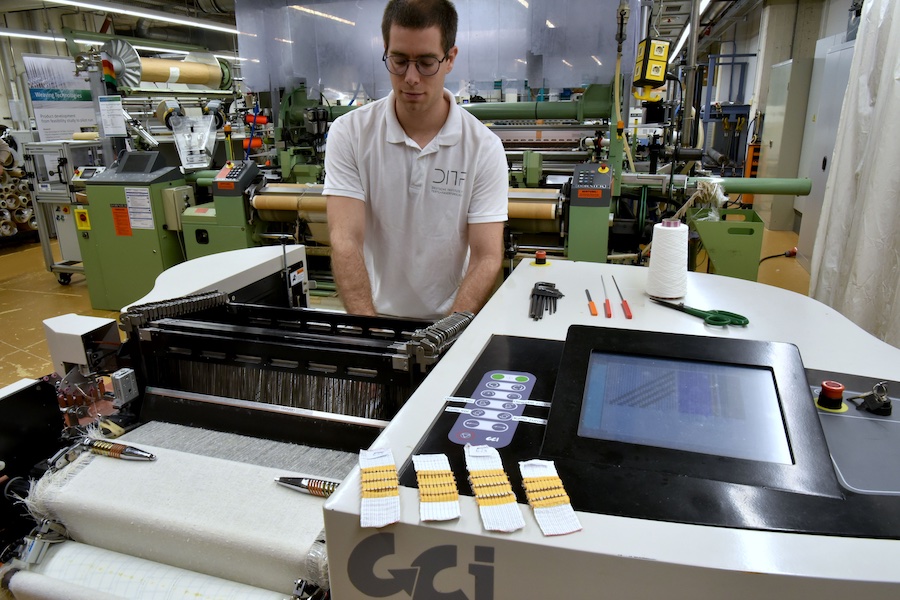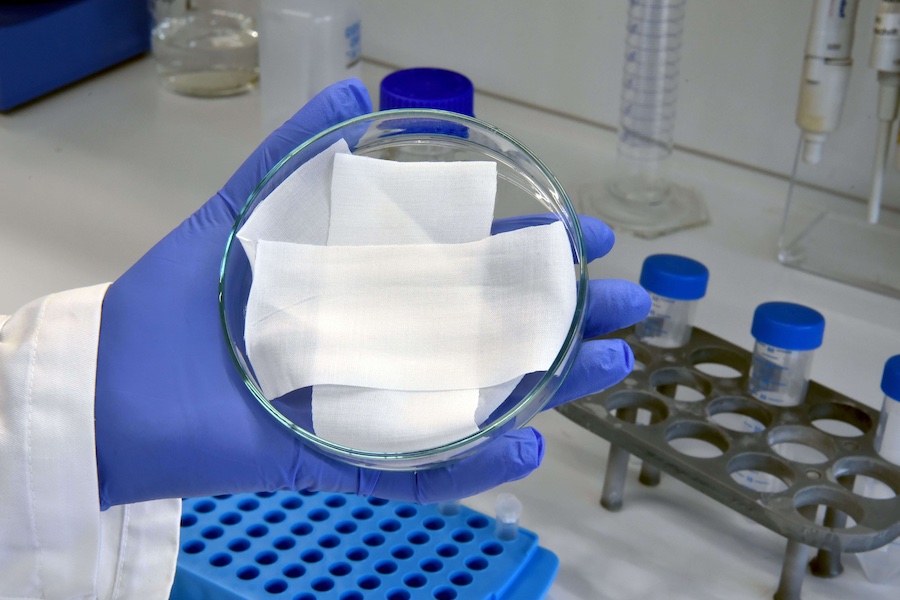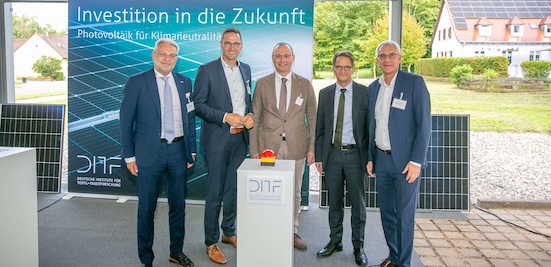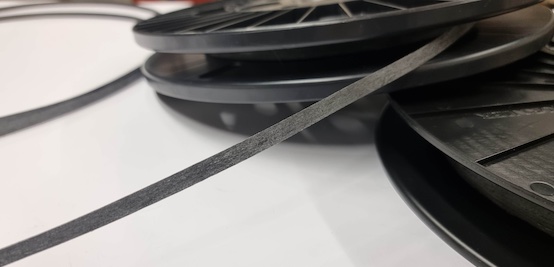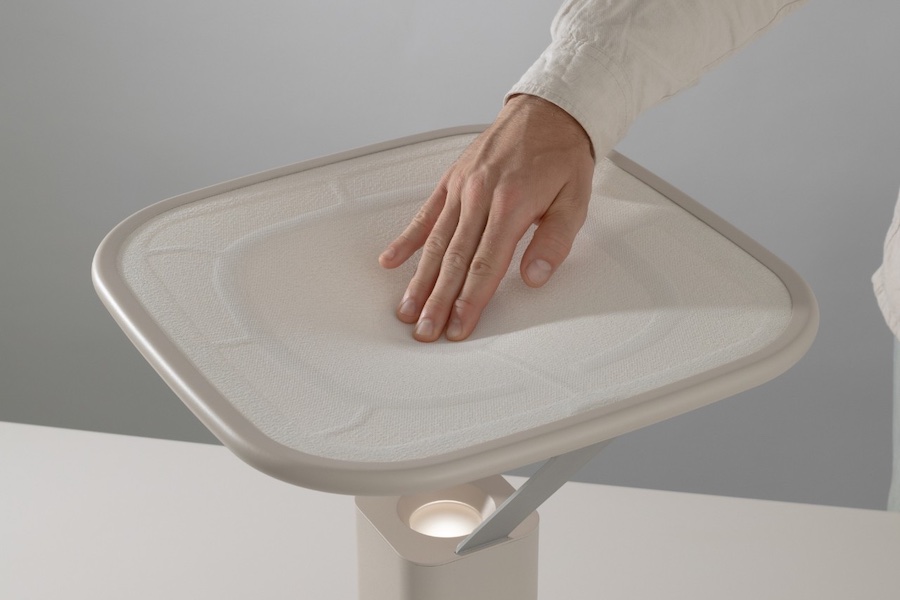#Smart Textiles
Intelligent textiles for construction, architecture and mobility: Smart Textiles User Forum in Stuttgart
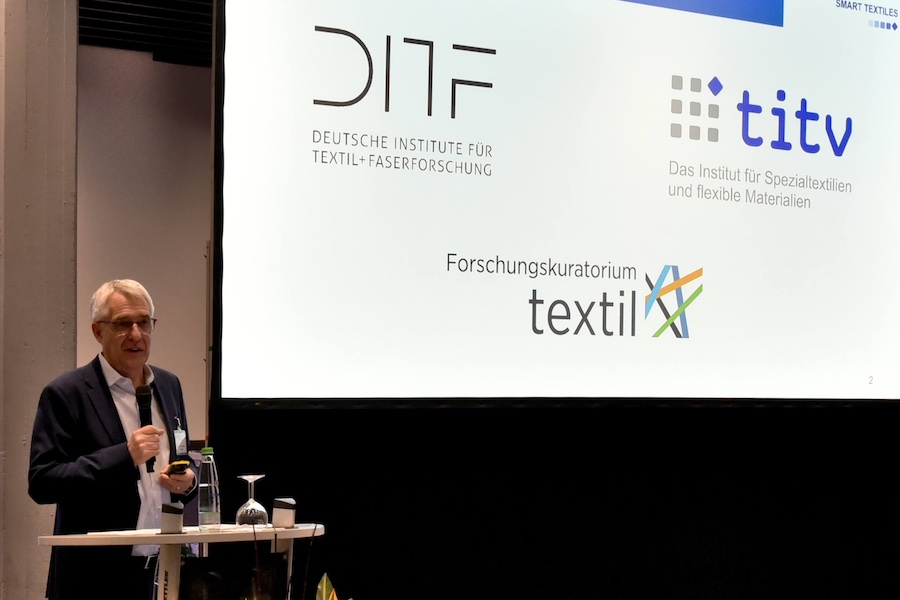
In keeping with the themes of the event, participants were able to take a look behind the construction fence of the Stuttgart 21 rail project on the first day. After the tour, DITF board member Götz T. Gresser drew parallels with the market for smart textiles. Just like the completion of the underground station, the market potential for smart textiles is developing more slowly than predicted.
One important reason for this is that there is still a lot to be regulated. Standardization was therefore a key topic in the presentations on the second day of the event. Norms and standards create trust among users. They reduce the error rate in design and therefore development costs, helping to bring innovations and new technological developments into use. Kristina Müller from the German Institute for Standardization explained that consistent compliance with standards can reduce error costs in construction, for example, from the current estimated eleven percent to five percent per year. Jan Beringer from the Hohenstein Group used the example of actively illuminated high-visibility clothing to show the hurdles that need to be overcome on the way to standardization.
In addition to high-visibility equipment, workwear offers many opportunities for smart functions. Despite all safety precautions, accidents at work cannot always be avoided, explained Silke Rehm from Adresys. Smart clothing can then automatically make an emergency call and trigger an emergency shutdown of the machine.
There are suitable testing devices for monitoring and quality assurance of materials and textile surfaces. Stefan Fliescher from Textechno presented a device that has so far been exclusively used at the DITF.

The second block of presentations focused on mobility: examples included textile ideas for flight cabins of the future from Diehl Aviation, precise and therefore energy-saving heating systems for vehicles from Köstler and contactless sensor technology from Rotec, which detects when fiber ropes need to be replaced. Erhardt manufactures flexible, customized bodies for commercial vehicles They are particularly suitable for logistics in city centers and are equipped with textile sensors, for example for measuring temperature or determining the optimum load. The textile superstructures not only offer a textile surface for design, they can also communicate with their surroundings. Digital lettering shows when the vehicle is giving way or warns cyclists of blind spots when turning. Modules that are not required can be folded or rolled up to save space.
In the construction and architecture application area, solutions for climate change are in demand. TEC KNIT has developed smart shading systems made from “shape memory” polymer fibers that close or reopen depending on the temperature. Optigrün relies on smart rainwater management for greening buildings. Textile sensor technology ensures that the water is optimally distributed over the surface - digitally controlled according to the weather forecast. Michael Schneider from the Smart Textiles Hub showed how intelligent knitted fabrics installed on flat roofs detect moisture and temperature by contracting or expanding accordingly. This can also prevent damage caused by icing, for example. Christoph Riethmüller from the DITF explained that the actual state of buildings is constantly changing due to events. The charm of smart textiles is that they can adapt to these changes. In this way, it is possible to intervene before negative consequences become noticeable. This saves a lot of energy. For example, the targeted heating of walls depending on the relative humidity prevents the occurrence of mold with low energy consumption. Intelligent shading systems also ensure that rooms remain at a pleasant temperature in summer without air conditioning and that the heat remains in the room in winter.
“In many industries, it is not known where textiles can offer new ways and solutions. And even less is known that these textiles are also smart,” emphasized Professor Götz T. Gresser in his closing remarks.
The event was accompanied by an exhibition where participants were able to try out numerous smart products.
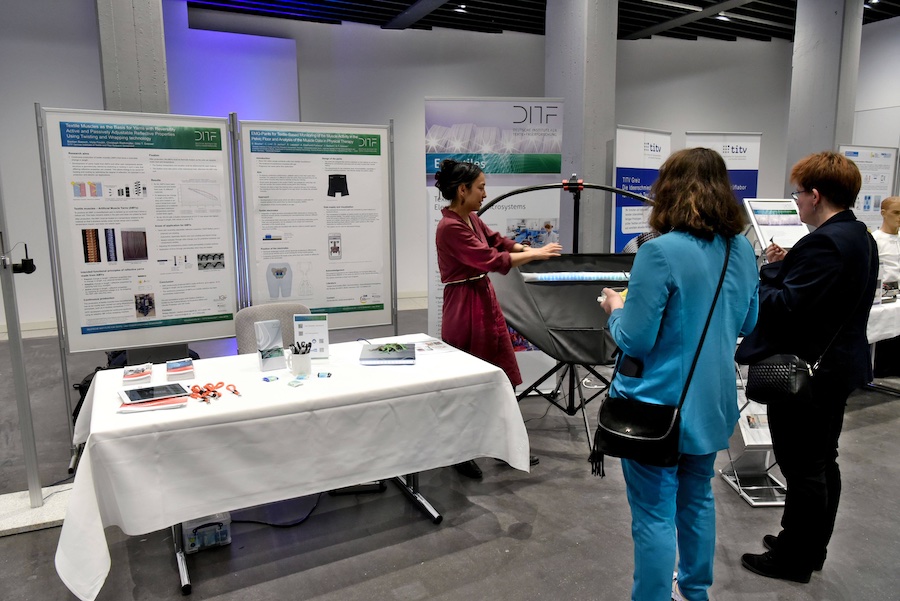
The annual User Forum is organized by the German Institutes of Textile and Fiber Research Denkendorf (DITF), the Textile Research Institute Thuringia-Vogtland e.V. (TITV Greiz) and the Forschungskuratorium Textil e. V. (FKT).
The next SMART TEXTILES User Forum will take place on March 4-5, 2026 in Zeulenroda.



